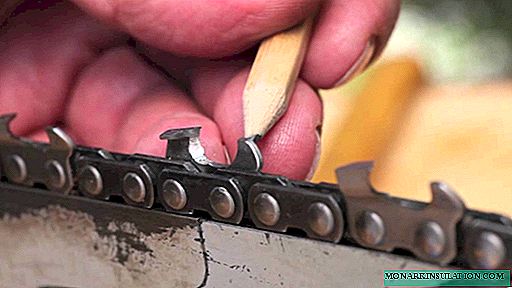
Many in childhood dream of having a dog. But in a city apartment there is not enough space for her, but a country house gives the opportunity to realize, finally, children's dreams. It will be spacious enough even for a large dog. The dog who will live here will not only be the guard and reliable guard of the site. He will be a true friend. The main advantage of a dog is that it loves its owner as he is, without requiring a reward for his affection. But friendship requires mutual care and attention. A good owner will not leave his faithful dog without a comfortable home. A do-it-yourself doghouse is the surest way to take care of your friend.
How to choose a suitable place?
As well as for the guard post, the place for the booth should be carefully selected:
- The kennel should not be blown by the wind, so the most frequent wind direction must be taken into account.
- The place for such a home should be bright, but within reach of the dog there should be a shaded area where the animal could hide in the heat.
- It is better to place the booth in a dry place - on a hill so that water can not accumulate under it.
- The kennel is placed near the entrance to the apartment building, on the south side.
- From his observation post, the dog should see the main part of the site and the entrance gate (gate).
The last principle of choosing a place requires special explanation. Dog owners whose pets live with them in city apartments know that the dog always tries to find a position in which it has maximum visibility. Let this sometimes even interfere with the owner, who believes that the dog just gets confused under his feet. The centuries-old instinct of the guard makes her choose the best place to protect the owner.

It is better to place the booth in a dry place and on a hill

From his observation post, the dog should see the main part of the site
Stages of building a doghouse
A winter warm booth for a dog is not always needed, even if it will be on the site in the winter. It is better to make a universal kennel that can be operated in both warm and cold seasons. Such a booth should consist of two parts - a vestibule for the entrance and a berth where the dog will not be afraid of any cold.
Preparation of the necessary material
When deciding how to make a dog house, do not complicate your life and that of your faithful dog. It follows from his understanding of comfort, and not your vast material possibilities. Dogs don’t need stone palaces, artificial lighting and vinyl siding.

Particularly loving owners build entire castles for their pets

The animal will experience discomfort in such dwellings.

There should be no bulging knots on the surface of the tree, no sticking chips
Plain coniferous wood is the best material for a dog house. It is the breathable wood that can provide the air circulation necessary for the dog and, therefore, the microclimate he needs. The tree, which forms the basis of the booth, must be prepared in advance: cleaned so that the animal does not hurt itself and does not pick up its paws.
Note that the service life of coniferous wood is 7-8 years. After this period, it is necessary to check the structure for strength and replace defective elements in time.
For construction, you may need:
- bars of the following sizes (in mm): 100x100, 40x40, 100x50;
- lining;
- plywood;
- batten;
- decorative slats;
- roofing material;
- mineral wool or polystyrene;
- shingles;
- glassine;
- polyethylene;
- tarpaulin;
- galvanized nails;
- pinotex;
- antiseptic impregnation like "Senezh";
- sand.
The inside of the booth does not need to be treated with antiseptics and other odorous substances. Remember that dogs have a finer sense of smell than humans. For us, an extraneous smell can be invisible, and he will torment and irritate the dog.
Definition of building parameters
The size of the dog booth is of great importance. In a too spacious kennel it will be cold in winter, and in a close one - neither lie down nor turn around. Therefore, we will build a kennel based on the individual parameters of our dog.

For each dog, it is better to make a booth of individual “cut” - it is necessary to calculate the optimal dimensions
We take measurements and immediately make the calculation:
- The height of the booth is determined based on the growth of the animal at the withers with the addition of the thickness of the proposed litter and another 10-15 cm. The dog should move along the booth with its head bowed and sit in it without touching the ceiling.
- The depth of the kennel should allow the animal to lie on its side, stretching out its legs. To determine this parameter, you need to put the dog and measure the distance from its withers to the tips of the front paws, add 10-15 cm.
- The width of the dwelling is the total width of the vestibule and the berth of the dog. The sleeping place can have a width that is 10-15 cm greater than the distance from the dog’s nose to the base of its tail. The width of the vestibule is determined depending on the build of the dog. It should be convenient for her to enter and leave the booth. Sometimes the vestibule is made more of a sleeping place, because here in summer the dog can lie on its side, and in winter it will rest in the sleeping place, curled up.
- The height of the entry hole (hole) is less than the height of the dog at the withers by 5-9 cm.
- The width of the hole should be 5-8 cm wider than the dog’s chest.

A dog booth scheme is needed after the owner has finally decided on the parameters of the future building. Having such a drawing, it will be easier to calculate the need for materials so as not to purchase anything extra
Assembly process description
So, making a dog house is not so difficult if all the necessary tools and material are at hand. Here is a sample list of works:
- The bottom and frame. We collect the frame for the bottom from 40x40 bars, after which we nail the floorboards, trying not to leave cracks, so that it is warmer. If the dog is heavy, you can further strengthen the floor with 40x40 bars so that it does not sag. At the corners of the finished bottom, vertically fasten the bars 100x100. They will become the basis for the walls. Now the design resembles an inverted table. Between the main bars perpendicular to the bottom we set the bars 40x40. They will support the roof, strengthen the walls and mark the entrance.
- Walls. For covering the outer part of the booth, it is better to use a lining, which, unlike plywood, will not delaminate over time. We fix the skin with galvanized nails with small hats.
- Ceiling. If the booth is to be located in an aviary or under a canopy, then you can get by with such a ceiling, which is also a roof. If the kennel has no additional protection from the weather, you need to make the ceiling and the roof separately, leaving a space between them - the "attic". For the ceiling you will need plywood in size and 40x40 bars. How to insulate a dog booth? Warm it with mineral wool or polystyrene, lay with glassine. Top reinforce the second sheet of plywood. Such a ceiling is best made removable in order to be able to clean the booth and provide veterinary care to the animal. If there is no additional roof, the ceiling is covered with roofing material and shingles.
- Waterproofing and insulation. Turn the structure upside down. We treat it with antiseptic impregnation, cover it with roofing material and beat on top of it additional bars 100x50, which are also impregnated with Senezh. Again, turn the structure over, line the bottom with glassine, then put the insulation and again the glassine. We lay the final floor. Similarly, we insulate the walls and sheathe them from the inside with a lining. We make a frame for the manhole and the threshold.
- Roof. Initially make roof gables. For the perimeter, 40x40 bars are needed, a glassine is attached from the inside, and a lining is lined on top of the structure.
- Laz. It is recommended to close the inlet with a tarpaulin blind. So that it does not open from the wind, you can sew small pockets of polyethylene on it, from below, inside, into which sand is poured.
Outside, the booth can be covered with pinotex. This will extend its service life and give the product a pleasant aesthetic appearance.

It is simply necessary to use antiseptic and waterproofing impregnations, otherwise your booth will have to be rebuilt in a year

You can use glassine as a heater, or you can use any other material that you prefer

The lining of the lining is covered with roofing material and shingles - this is the easiest and cheapest option
Dog Care
Now that we know how to build a dog house, it remains only to find out how to care for this house.

The ceiling can be made removable to be able to clean the booth and provide veterinary care to the animal
Cleaning the kennel should be done regularly: at least once a month. Disinfection of the booth should be carried out monthly in the summer, and in the spring and winter - once a season. It is necessary to remove scraps, bones, and other similar objects, and treat the booth against parasites with lysol, formalin, or three percent creolin. Before the solutions dry, the dog should not enter the booth.











